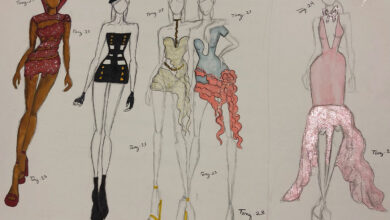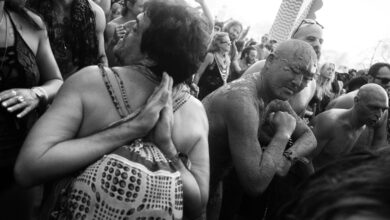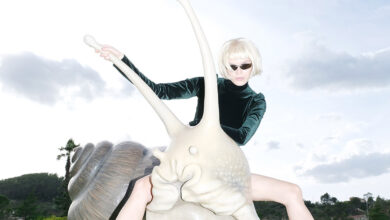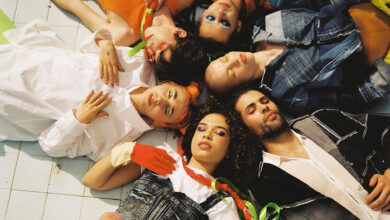A recently opened exhibition at the Florence-based Salvatore Ferragamo Museum looks at some of the most exciting inspirations behind the work of the “shoemaker of dreams”.
Text by Anna Battista
Inspiration, the lifeblood of people working in the creative industries, may be found in unexpected places: ask any artist or fashion designer where the inspiration for their works comes from and you will probably get a very long answer touching upon the most disparate disciplines and experiences. A recently opened exhibition entitled “Inspiration and Vision” currently on at the Salvatore Ferragamo Museum in Florence, explores and analyses the artistic and constructive inclinations behind the creations of Italian footwear designer Salvatore Ferragamo (1898-1960), “the shoemaker of dreams”.
During the last few years the Ferragamo Museum often organised interesting exhibitions that rediscovered Ferragamo’s designs or looked at the connections between his works and the film industry through icons such as Audrey Hepburn and Greta Garbo. Yet this new exhibition should definitely be included among the best ones since it looks at different inspirations through a wide range of art works and artifacts.
 Born in Bonito, a small village near Avellino, in the South of Italy, Ferragamo made his first pair of shoes for his sister’s First Communion when he was only nine. At the age of sixteen, Salvatore moved to the United States and worked for a short period of time in a shoe factory in Boston. While the American industry was very efficient, young Salvatore found that the quality of the final product was disappointing and decided to move with his brothers to Santa Barbara hoping to establish there a luxury shoe business that may have served also the film industry. Among his first regular and loyal customers there were indeed Pola Negri, Mary Pickford, Gloria Swanson, Mae West and Rodolfo Valentino. In 1923 Salvatore moved his shop to Hollywood. Located on one of the main streets of Beverly Hills, the Hollywood Boot Shop became the first stop for directors such as Cecil B. DeMille, James Cruze, Raoul Walsh and David W. Griffith. Among the most famous shoes Ferragamo created in this period there are also the iconic gold kid leather sandals worn by Douglas Fairbanks in Raoul Walsh’s Orientalist extravaganza The Thief of Bagdad (1924). Finding it difficult to source highly-qualified and skilled craftsmen able to make shoes by hand in the United States, Ferragamo went back to Italy, choosing Florence as the new base for his activities.
Born in Bonito, a small village near Avellino, in the South of Italy, Ferragamo made his first pair of shoes for his sister’s First Communion when he was only nine. At the age of sixteen, Salvatore moved to the United States and worked for a short period of time in a shoe factory in Boston. While the American industry was very efficient, young Salvatore found that the quality of the final product was disappointing and decided to move with his brothers to Santa Barbara hoping to establish there a luxury shoe business that may have served also the film industry. Among his first regular and loyal customers there were indeed Pola Negri, Mary Pickford, Gloria Swanson, Mae West and Rodolfo Valentino. In 1923 Salvatore moved his shop to Hollywood. Located on one of the main streets of Beverly Hills, the Hollywood Boot Shop became the first stop for directors such as Cecil B. DeMille, James Cruze, Raoul Walsh and David W. Griffith. Among the most famous shoes Ferragamo created in this period there are also the iconic gold kid leather sandals worn by Douglas Fairbanks in Raoul Walsh’s Orientalist extravaganza The Thief of Bagdad (1924). Finding it difficult to source highly-qualified and skilled craftsmen able to make shoes by hand in the United States, Ferragamo went back to Italy, choosing Florence as the new base for his activities.

“Inspiration and Vision” moves from two specific dates in the life of Salvatore Ferragamo, 1915, marking his relocation to California, and 1927, the year he returned to Florence. Upon entering the museum visitors are greeted by a display featuring three iconic creations by Ferragamo – the rainbow coloured platform shoes made for Judy Garland in 1938, his “Invisible” sandal in nylon fishing thread and calf that won him the Neiman Marcus Award in 1947, and the 1956 “Calipso” sandal with its distinctive cage heel – compared to three head pieces inspired by them, a multi-coloured orchid headdress, a hat in pleated silk and layered nylon tulle and a gold cage top hat, designed in May by milliner extraordinaire Stephen Jones.
Though surrounded by display cabinets mainly showing Ferragamo’s lasts for film divas and his creations in various materials – including raffia, needlepoint lace, fish skin, hemp, woven Manila straw, hand-painted canvas, cellophane from sweet wrappers and cork – and silhouettes (including “Moorism” and “Siriano”, Oriental mules from 1939 with a pointed toe and “Ninfea” a black sued boot with a striking purple satin lined pointed collar), this section also features interior design pieces such as the “Monofilo” nylon iron mesh armchair by Conti, Forlani and Grassi and sets the mood for the rest of the exhibition.

The focal point of the next section is the discovery in 1922 of Tutankhamun’s tomb in Egypt and its influence on the world of art and fashion. Director Cecil B. DeMille asked indeed Ferragamo to design the shoes for his film The Ten Commandments a year after the discovery, while, later on, the shoemaker created a golden sandal with an inverted pyramid-shaped heel.
In the same section further interesting comparisons are made between Ferragamo’s shoes and works of art from different cultures and times: the geometrical patterns of Etruscan vases and of rare hemispheric bowls from the 2nd century B.C., the intricate embroideries of Chinese robes from the Ching Dynasty or the rich decorations of an Indian bride’s dress, all seem to reapper in specific designs by Ferragamo.



Some shoes even show incredible parallelisms with the details of a Japanese armour, the beaded accessories of the Saho people, the delicate nuances of a cloak of scarlet ibis feathers or the distinctive shape of a rhinoceros’ skull.



Visitors with a passion for art will find more interesting the next section that mainly looks at some wonderful connections with Thayaht, Sonia Delaunay and the Italian Futurists.
The section dedicated to Italian painter and sculptor Ernesto Michahelles, better known as Thayaht, includes a rare newsreel of people wearing his “Tuta” (T-shaped overalls with a belted waist), his sketches for Madame Vionnet’s dresses inspired by precise geometric cuts that followed the principles of Cubism, and one of his paintings, “Paesaggio Spaziale” (Spatial Landscape, 1932), that shows his fascination with astronomy.

Ferragamo had a passion for colours, but the same could be said about Ukrainian-French artist Sonia Delaunay who opened a fashion studio in Paris and drew on the artistic theory of simultaneity to create her textiles and designs. The section dedicated to her includes sketches for textiles, fabrics in her signature geometric motifs and rare illustrations for Juste Présent by Tristan Tzara and for La prose du Transsibérien et de la petite Jehanne de France (Prose of Trans-Siberian and of Little Jehanne of France) by Blaise Cendrars.
A Loïe Fuller video showing the performer in her iconic “Serpentine Dance” and early adverts created for Ferragamo by Futurist painter and wizard of advertising graphics Lucio Venna function as a sort of interlude between the part of the exhibition dedicated to Thayaht and Sonia Delaunay and the section dedicated to the Italian Futurists.
The paintings, pieces of furniture and sketches for garments by the Futurist artists display in their geometric-abstract motifs a powerfully dynamic use of colours and a playfully destructive energy.

This part of the exhibition includes Fortunato Depero’s colourful waistcoats and Giacomo Balla’s projects for shoes and jumpers and his wool and felt futurist suit (borrowed for the occasion from Ottavio and Rosita Missoni’s collection). Yet Ferragamo shared with the Futurists not only an interest in bright and vivid combinations of colours, but also a great passion for experimenting with unusual materials.

In the “Manifesto della Moda Femminile Futurista”, the Futurists wrote: “We open the doors of the couturier’s salon to paper, cardboard, glass, tin-foil, aluminium, ceramics, rubber, fish-skin, packing cloth, string, hemp, gas, and to living plants and animals.” Among the most unusual materials Ferragamo used for his shoes there is indeed also gold: his 18-carat gold sandals from 1956 are showcased in a special room between Sano di Pietro’s 15th century “Madonna with Child”, Andy Warhol’s gold shoes and Lucio Fontana’s golden study on spatiality, “Concetto spaziale” (Spatial Concept, 1964).


The last section of the exhibition is directly connected with the first part: in a room divided in themes – “Shape”, “Material”, “Colour”, “Futurism”, “Glamour” and “Fantasy” – some of the most beautiful and bizarre creations from the archives of Stephen Jones are displayed next to Ferragamo’s designs.

Millinery fans will be able to rediscover 30 hats in wood, folded paper, metal net or covered in embroidered sequins; bicornes, toques and berets topped with the Eiffel Tower, bidimensional wool crêpe cloches in homage to Gruau and surreal felt paw hats. Jones is a milliner and Ferragamo was a shoemaker, but their works show they do have something in common, that is a passion for craftsmanship and for experimental pieces.

Most exhibitions at the Ferragamo Museum feature a film room where visitors can stop and relax for a few minutes. In this case an entire essay could be dedicated to the clips collected in the film room of this exhibition. The curators selected indeed 13 avant-garde films including Anton Giulio Bragaglia’s Thaïs (1916), Hans Richter’s Rhythmus 23 (1923), Fernand Léger and Dudley Murphy’s Ballet Mécanique (1924), Marcel L’Herbier’s L’Inhumaine (1924), Yakov Protazanov’s Aelita (1924), Man Ray’s Emak Bakia (1926), Dziga Vertov’s Man with a Movie Camera (1929) and Eugene Deslaw’s Montparnasse (1929). So in between kaleidoscopic and mesmerising filmic distortions, early experimental techniques, and abstract inventions, visitors will be able to watch once again Man Ray’s rayograms and out-of-focus animation or rare images of Luis Buñuel eyeing the legs of beautiful Parisian women passing the terrace of the café where he is sitting.
With over 300 pieces to admire and be inspired by, “Inspiration and Vision” is definitely a “Dionysian” exhibition, filled with colours and chaos. At times the connections made may sound a bit far-fetched (references to Florence-based metaphysical and esoteric circles and reincarnation are not proved for example in Ferragamo’s biography…), yet they still help visitors understanding that there is not a definite formula to explain how to become creative, but inspiration is endless, can come from the most disparate sources and disciplines and, most importantly, can strike at any time.
“Inspiration and Vision” is at the Salvatore Ferragamo Museum, Florence, Italy, until 12th March 2012.

















